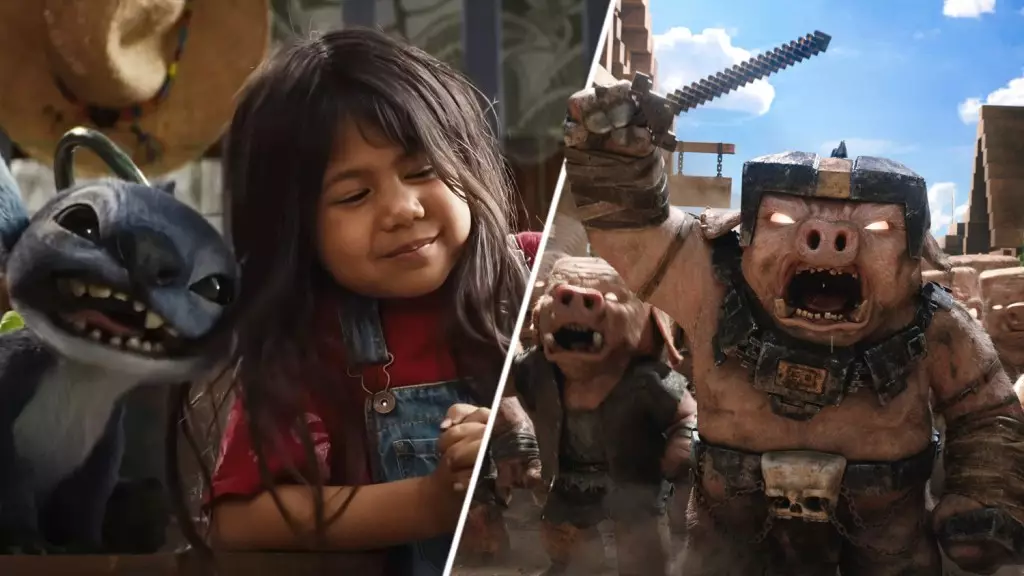In recent years, Hollywood has shifted aggressively toward leveraging nostalgia to restore box office vitality, with Disney’s latest live-action remake of “Lilo & Stitch” exemplifying this trend. What becomes obvious upon examining these patterns is that studios are increasingly relying on beloved childhood properties not because they innovate, but because they manipulate emotional attachment for profit. This strategy, while seemingly savvy, exposes a deeper flaw in the industry’s understanding—its overdependence on safe bets rather than creative risk-taking. The success of “Lilo & Stitch,” which has dominated the global box office and shattered records, underscores Hollywood’s retreat from originality and a dangerous focus on proven brands. It signifies a market that is less interested in new stories and more interested in rehashed nostalgia, fostering a cycle of stagnation rather than growth.
Market Trends and the Illusion of Post-Pandemic Resurgence
The post-Covid era initially appeared to hint at a resilient comeback for theatrical releases; however, a closer look reveals that this resurgence is heavily influenced by strategic reboots and franchise fatigue. “Lilo & Stitch,” now in its sixth week, is a testament to how studios are banking on the entrenched fanbases of nostalgic properties. The fact that it is already the top-grossing Disney live-action film of all time in key markets like Mexico and several Latin American countries highlights the geographic divide—a region that still treasures familiar cultural touchstones. Meanwhile, “A Minecraft Movie” has shifted the narrative by becoming the highest-grossing MPAA film of 2025, illustrating how even animated or video game adaptations are now the safest bets. This overreliance on established properties risks distorting the natural evolution of cinema into a repository of familiar images rather than a space for innovative storytelling.
The Industry’s Dependence on Female-Led Nostalgic Franchises
An interesting—and potentially troubling—dimension of this trend is the evident success of nostalgic female-centric properties. “Lilo & Stitch” (with 62% female viewership), “How to Train Your Dragon” (50%), and upcoming “Moana 2” (71%) demonstrate an industry increasingly preoccupied with gender-specific appeal. This focus, while seemingly inclusive, could reinforce stereotypes about what demographic groups are financially viable, limiting creative diversity. The obsession with nostalgic properties targeting women indicates a strategic push to capitalize on emotional bonds rather than produce innovative content that broadens cultural narratives. Disney’s upcoming “Freakier Friday” sequel, featuring veteran stars, seems to be the studio’s latest attempt to capitalize on this lucrative demographic. Such narrow market targeting, under the guise of diversity, risks homogenizing cinematic offerings into safe, predictable formulas.
The Geopolitical and Cultural Implications of Global Success
The international box office, often seen as a secondary revenue stream, now plays an outsized role in determining a film’s success. “Lilo & Stitch”’s dominance across markets like Mexico, Brazil, and Europe is more a reflection of cultural familiarity and emotional resonance than a sign of global cinematic innovation. Its top rankings and record-breaking performances in these regions highlight how nostalgia transcends borders but also expose the industry’s reliance on cultural familiarity as a crutch. This pattern suggests that Hollywood’s global strategy is less about universal storytelling and more about targeted appeals to specific markets—yet, such dependence risks eroding diverse voices and cultural authenticity. The focus remains on replicating proven formulas rather than fostering genuinely diverse cinematic identities.
The Commercial Logic and Its Dangerous Consequences
The enormity of “Lilo & Stitch’s” commercial success underscores a fundamental flaw: Hollywood’s measure of success is increasingly detached from artistic innovation and more aligned with merchandising and franchise sales. Stitch’s retail sales potently illustrate this point, soaring from $0.2 billion in 2019 to an astonishing $2.6 billion in 2024—yet, these figures are not indicative of cultural progress but of calculated marketing. This commerce-driven approach consolidates power within a handful of successful franchises, discouraging studios from riskier projects that could forge new creative pathways. The risk-averse mentality prevalent today poisons the industry’s potential to evolve, shifting its focus toward quick profits over meaningful artistic progression. As a result, audiences are fed a persistent diet of reboots, sequels, and adaptations, all designed to maximize dollar signs rather than cultural relevance.
Without a doubt, the fixation on nostalgia and safe franchises reveals a Hollywood obsessed with predictability—an industry that prefers the familiar at the expense of innovation and cultural growth. While these blockbusters generate enormous revenues in the short term, they threaten long-term artistic vitality, turning cinema into a marketplace of endless reruns rather than a platform for genuine storytelling evolution.

